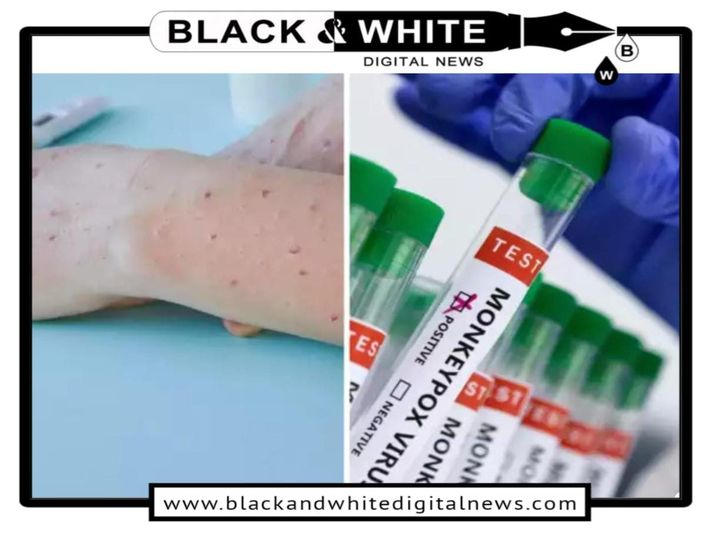India on High Alert for Mpox: Union Health Ministry Directs Enhanced Vigilance, Designates Hospitals, and Expands Testing Facilities
||Black and White Digital News ||
||Parvinder Singh August 21,2024 ||
India: With the global rise in Mpox (monkeypox) cases, India’s Union Health Ministry has issued a directive for heightened surveillance at international airports and land ports, especially those bordering Bangladesh and Pakistan. This comes amid efforts to detect and isolate any international passengers exhibiting symptoms of Mpox, a viral illness caused by the monkeypox virus, which belongs to the Orthopoxvirus genus. Although no cases have been reported in India so far, the government is taking preemptive measures to prevent the virus’s entry and spread within the country.
Vigilance Measures and Designated Hospitals:
In response to the potential threat, the Union Health Ministry has designated three central government-run hospitals in New Delhi—Ram Manohar Lohia Hospital, Safdarjung Hospital, and Lady Hardinge Medical College—as nodal centers for isolating, treating, and managing any Mpox cases. These hospitals are equipped to provide specialized care if necessary. Additionally, state governments have been directed to prepare designated hospitals within their jurisdictions to manage potential cases effectively. This decentralized strategy aims to ensure that any outbreak is managed promptly and efficiently across India.
Expansion of Mpox Testing Labs:
The ministry has also emphasized the need for early diagnosis and has instructed a network of laboratories to be prepared to test for Mpox. Presently, 32 laboratories across India are equipped for this purpose. The expansion of testing facilities is crucial for the early detection of cases, which is vital for effective containment and preventing community transmission.
Understanding Mpox: Transmission and Symptoms:
Mpox primarily spreads through direct physical contact with an infected individual, which includes activities such as touching, kissing, or sexual contact. The virus can also spread through contact with contaminated materials like clothing or linens and from infected animals to humans through bites, scratches, or handling of animals during activities like hunting or cooking. Pregnant individuals can transmit the virus to their unborn children, adding to the risks associated with the disease.
The symptoms of Mpox usually appear within one to three weeks after exposure and can last from two to four weeks. Key symptoms include:
Rash:A hallmark of Mpox, the rash starts as flat sores, progressing into fluid-filled blisters, which can be itchy or painful. These lesions eventually crust over and heal.
Fever:High fever typically accompanies the rash.
Headache and Muscle Aches:Severe headaches and muscle aches are common.
Swollen Lymph Nodes: Lymphadenopathy, or swollen lymph nodes, is another frequent symptom.
Fatigue: Many patients experience general fatigue and low energy levels.
The rash can vary in severity and location, with some individuals developing only a few lesions, while others may have hundreds. The rash can appear on different parts of the body, including the face, palms, soles, mouth, genital area, and anus.
WHO’s Public Health Emergency Classification:
The World Health Organization (WHO) has classified Mpox as a Public Health Emergency of International Concern (PHEIC) due to its global spread, particularly in parts of Africa. Although the risk of a significant outbreak in India remains low, the current strain of the virus is noted for being more virulent and infectious, raising global concerns. As of a recent WHO report, there have been 99,176 cases and 208 deaths globally attributed to Mpox, with the Democratic Republic of Congo witnessing a steady increase in cases.
India’s proactive approach, including enhanced vigilance, designated hospitals, and expanded testing capabilities, is critical in preventing and managing potential Mpox cases. The Union Health Ministry’s measures reflect a commitment to public health safety, aiming to minimize the risk of an outbreak in the country. Public awareness about the symptoms and transmission of Mpox remains essential in supporting these efforts and ensuring community-level preparedness.
Leave a comment
You Might Also Like
ISRO Successfully Launches BlueBird Block-2 Satellite From Sriharikota
ISRO Successfully Launches BlueBird Block-2 Satellite From Sriharikota Pause The Indian Space Research Organisation (ISRO) on Wednesday successfully launched the…
4 Min Read
J&K Government Approves 18% Increase in Public Transport Fares from January 2026
J&K Government Approves 18% Increase in Public Transport Fares from January 2026 #JKGovt #PublicTransport #FareHike #TransportFareHike #JammuAndKashmir #JKNews #SrinagarNews #PublicTransportUpdate…
0 Min Read
Hum Daily Wagers Ko Phase Wise Permanent Karege Sunil Sharma Sahab Jawab De Rattle Power Project K Logon Ko Kam Kyu Nahi Krne De Rahe Hai Deputy CM Surinder choudhary
Hum Daily Wagers Ko Phase Wise Permanent Karege Sunil Sharma Sahab Jawab De Rattle Power Project K Logon Ko Kam…
0 Min Read
Warehouse Jammu Me Police Aur Labour Issue Ko Deepak Gupta Ne Hal Karwa Diya
Warehouse Jammu Me Police Aur Labour Issue Ko Deepak Gupta Ne Hal Karwa Diya #DeepakGupta #JammuWarehouse #PoliceAurLabourIssue #IssueResolved #ProblemSolved #JammuNews…
0 Min Read









